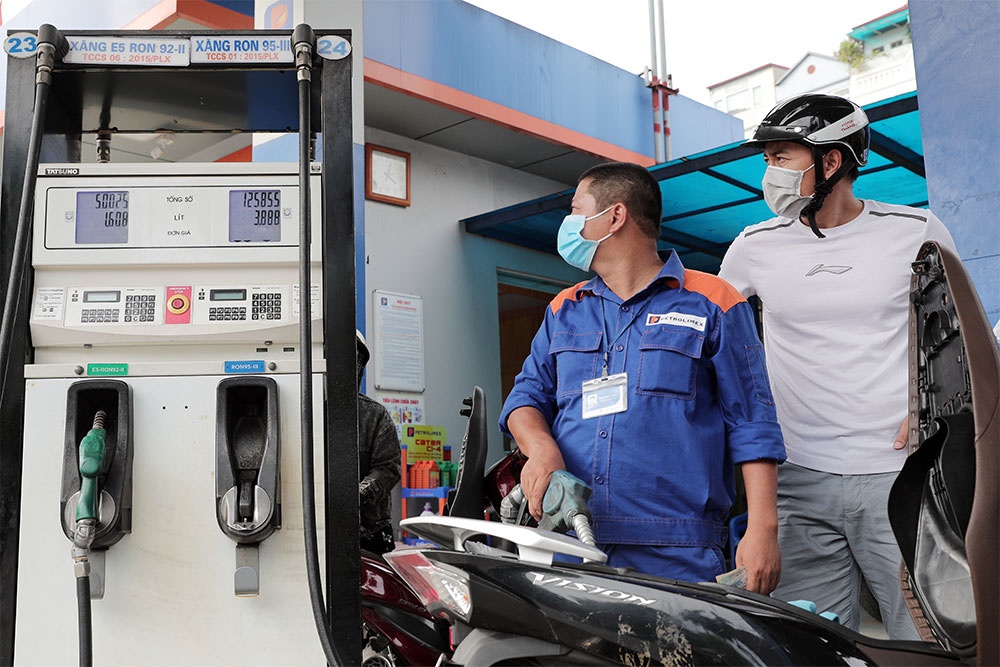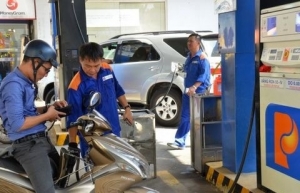Vietnamese oil facing significant hurdles
Oil and gas remain important resources in this plan, and stronger cooperation with large corporations could be a suitable solution to change the landscape and take advantage of the high oil prices.
 |
| Vietnamese oil facing significant hurdles |
Oil prices last week maintained their gains amid fears of a cooling recession and possible Organization of the Petroleum Exporting Countries (OPEC) production cuts. In the early morning hours of August 27, the price of WTI crude oil on the New York Mercantile Exchange stood at $92.9 7 per barrel, up 45 US cents compared to the previous session. Meanwhile, the price of Brent oil stood at $100.80 per barrel, up $1.46 during the session.
The revenue of Vietnam’s oil and gas group PetroVietnam increased sharply, from $8.5 billion in the first quarter to $20.36 billion in the second quarter of this year.
Oil and gas midstream enterprises, such as Binh Son Refining and Petrochemical JSC (BSR), also benefit from last year’s increased production and have cheap inventories, low selling prices, and export growth. It is expected that BSR will have revenue and profit growth of 30-40 per cent in 2022.
Nevertheless, the fact that OPEC adjusted its forecast for global growth and low oil demand in 2022 remains a real challenge for Vietnamese oil and gas companies. According to OPEC, the world economy is expected to grow only 3.1 per cent in 2022, down from the 3.5 per cent forecast given in May.
OPEC also forecasts that the global oil demand will be around 100 million barrels per day, down from an estimate of 100.3 million in recent months. According to the organisation, some of its members are struggling to meet monthly output quotas.
In Vietnam, oil companies also have to work hard to maintain production output after many years of low production. The Russia-Vietnam joint venture Vietsovpetro, at a meeting last December, agreed on the output target of 2.9 million tonnes of oil and condensate and 65.4 million cubic metres of gas.
Nguyen Quynh Lam, general director of Vietsovpetro, said that the profit of $209.8 million for both sides in the first half of this year came from “high oil prices and efforts to increase production output to more than 1.5 million tonnes.”
After peaking in 2002 with 13.5 million tonnes, Vietsovpetro’s output decreased by one million tonnes per year. In recent years, the output was just over three million tonnes.
According to Hoang Ngoc Trung, deputy general director of PetroVietnam Exploration Production Co., Ltd. (PVEP), many of its main fields have reached the threshold. “In 2021, the output decreased by about 10 per cent compared to 2020, and PVEP reached an output of about 3.8 million tonnes of oil equivalent. In 2020, PVEP’s mining output decreased slightly compared to 2019.”
In July, Vietnamese oil leaders had a meeting to discuss solutions to maintain production output and take advantage of opportunities from high oil prices in the world market. At the end of August, these companies then decided to maintain output levels not lower than 2021, but that is a huge challenge as annual natural output has been falling by 5-8 per cent.
Oil prices have been trading at below $100 per barrel continuously since the beginning of August. Some analysts believe that oil prices could rise again due to the transition from gas to oil, the OPEC+ readiness to cut production again, and a low global spare capacity. An EU embargo on Russian seaborne oil imports later this year is also expected to push oil prices higher.
Thus, oil prices are expected to rise later this year and early next year, if not for a deep recession that reduces global oil demand. Vietnamese oil moguls cited the limited spare capacity of US shale producers and the OPEC+ group as the main factor driving oil prices higher next year, even if global demand grows less than expected.
Le Manh Hung, general director of PetroVietnam at the meeting in August, said, “The market may move into a period of falling oil prices from new developments and unpredictable geopolitical fluctuations.” However, Hung still urged member companies to focus on implementing solutions to ensure the completion of the maximum increase in reserves and exploitation output as the risk of supply disruption remains high.
|
Phan Duc Hieu Standing member, National Assembly Economic Committee International oil and gas activities are risky in nature and those involved should pay attention to international practices. The amended Law on Petroleum only regulates upstream oil and gas activities, while midstream and downstream activities of the oil and gas industry, such as petrochemical refining, fertiliser production, and electricity generation are governed by other laws. The market context and country’s conditions show that it is necessary to synchronise the Law on Petroleum with the provisions of other laws. For example, to build a gas pipeline, many other laws must be followed such as those on investment, land, and construction. Therefore, the provisions in the bill should be in the direction of allowing the implementation of projects for oil and gas exploration, thus avoiding the need to submit to many agencies and ministries and other legal conflicts.
Hoang Quoc Vuong Chairman, PetroVietnam The Russia-Ukraine conflict has impacted fuel and crude oil prices, but the price volatility is likely to be of short term. The energy transition is irreversible and crucial. The market situation is more unpredictable, and risks are also increasingly diversified in the last months of the year. We actively update our forecasts regularly and will see how to develop appropriate scenarios and responses, especially focusing on governance solutions, such as volatility management, risk management, and financial risks.
Nguyen Quoc Thap Chairman, Vietnam Petroleum Association The Law on Petroleum was first promulgated in 1993, with two amendments in 2000 and 2008, but mainly regarding the integration with the then-existing laws on tax and investment. However, the attraction of investment in the oil and gas sector has dampened since Decree No.95/2015/ND-CP was introduced. Despite seeing an actual decline in oil production, the low number of new contracts signed in the industry means fewer new fields in operation to increase output. PVEP between 2010 and 2015 signed 27 oil and gas contracts, but only two since 2016. Indonesia annually bids and signs 4-6 oil and gas contracts. If only in terms of finance, the draft Law on Petroleum has made progress. But in terms of the investment environment in general, more efforts are still required. Currently, Indonesia and Malaysia are both implementing oil and gas contracts, although the area of operation also has a certain complexity.
Hoang Viet Phuong Director, SSI Centre for Analysis and Investment Consulting In July, the stock market experienced a sharp decline, with the VN-Index falling below the 1,200-point mark. This is certainly a very favourable point in the sense that if an investor wants a long-term investment, the market valuation is certainly much more attractive than it used to be. Assessing the long-term prospects of the oil and gas group is a difficult task. For now, it can only be guessed that oil prices could remain high for at least half a year until supply rises enough again. China has not fully opened, so the oil demand may increase further in the near future. In 2023, oil consumption may slow down as the economy is at risk of recession. |
 | Petrol retailers demand major changes Retail petroleum businesses have asked to stop contributing to the petrol price stabilisation fund, increasing the commission to reduce losses and permanently withdrawing the licence of unprofitable retailers. |
What the stars mean:
★ Poor ★ ★ Promising ★★★ Good ★★★★ Very good ★★★★★ Exceptional
Related Contents
Latest News
More News
- Global partnerships key to Vietnam’s IFC development (December 26, 2025 | 16:18)
- Vingroup pulls out of bid to invest in North-South high-speed railway (December 26, 2025 | 11:42)
- Strengthening supply chains through trade promotions and customs reform (December 24, 2025 | 14:00)
- PM orders investment model for North–South high-speed rail (December 22, 2025 | 17:43)
- LS Eco Energy to invest in Vietnam rare earth sector (December 22, 2025 | 17:31)
- Government moves to establish International Financial Centre (December 21, 2025 | 21:00)
- Vietnam's IFC to target global investment flows (December 21, 2025 | 18:00)
- Two national hospitals expand capacity with new facilities (December 20, 2025 | 09:00)
- Ha Tinh breaks ground on major Vingroup industrial and energy projects (December 19, 2025 | 18:24)
- EVN launches major power infrastructure projects nationwide (December 19, 2025 | 18:17)





 Tag:
Tag:




















 Mobile Version
Mobile Version